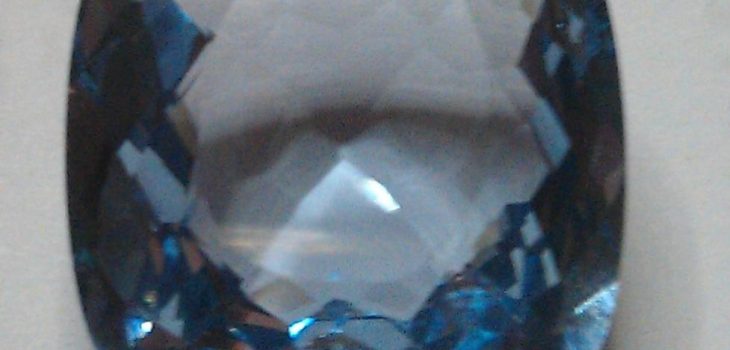 Silversmithing and Jewellery Making
Silversmithing and Jewellery Making
Caveat Emptor – Let the buyer beware
When it comes to purchasing gemstones over the internet, the saying“CAVEAT EMPTOR” = Let the buyer beware, should always be born in mind. Over the last few months I have made purchases and “won” several auctions on one particular internet auction site. Out of the first 5 purchases, I’m sad to say that only 1 was just as the internet seller had described.
The first was a rather nice looking stone that was described as an internally flawless, square, chequerboard cut, 27 carat earth mined Aquamarine with “full fire”. The stone set me back all of $23 including postage. So I was right to be suspicious, knowing that if the stone was real then its true value would have been maybe 50 times what I’d paid for it.
When the stone arrived, I thought that the colour wasn’t quite right and– though the polish was good – the cut left a bit to be desired with the meet points not quite meeting. So I headed off to the gem club after making sure that our resident gemologist, Kim, was bringing his refractometer with him. Checking the stone several times, with the refractometer and with a microscope, we determined that the stone was in fact a synthetic spinel.
In another auction, I “won” 4 large gold Tigereye Cabachons from Hong Kong that, including postage, were going to cost me the princely sum of $4.91. The price of these cabs was such that I felt that they would have been great starter stones for teaching wire wrapping or silver smithing at the Club. Sad to say that this parcel of stones has never arrived.
My next foray into the minefield of bidding on internet auctions landed me with what was described as an oval 23.15 carat Afghanistan Pink Kunzite, which I “won“ at a cost of $25.12. I thought this a reasonable price for a Kunzite so was quite hopeful that it was going to test as described. Shining an ultra-violet light on the stone and seeing an explosion of fluorescent orange and red colours caused me to doubt the stone’s description. Sure enough, when tested and examined under the microscope we came to the conclusion that I was in fact holding a synthetic corundum.
In a similar fashion I got a stone that was described as a 6.57 carat 10mm Tanzania round cut Yellow Zircon with VVS inclusions. This stone was coming from China and cost me 99c with free postage. Under the microscope it was easy to see that there was no double refraction of the facets when looking through the stone. The refractometer showed the stone as being Cubic Zirconia.
But it’s not all bad. I landed a parcel of 50 eye clean Diamonds weighing total of 0.5 carat for $60.20. They might be small but they’ll give me plenty of practice at setting small stones as accents in the jewellery that I make. And the range of colours – both in natural light and under ultra-violet – is amazing.
 So what of these experiences? Am I deterred from buying more items from internet auction sites? No. In fact it makes the experience more fun with the challenge to spot stones that are more likely than not to be as described.
So what of these experiences? Am I deterred from buying more items from internet auction sites? No. In fact it makes the experience more fun with the challenge to spot stones that are more likely than not to be as described.
In order to protect my hard earned cash, I always use an Australia Post “Load&Go” Visa Card to pay for the items I buy. Using this card to pay via PayPal has given me the security that I’d lack if I used my credit card directly.
Because some of the items that I purchased were not as described, I contacted each seller by email and also reported them to EBay. That meant that I was refunded the money I paid out for the “Kunzite” synthetic corundum and the “Aquamarine” synthetic spinel. So in effect I got them for free.
I contacted the seller of the “Yellow Zircon” Cubic Zirconia and let him know that I knew that what he was selling was incorrectly described. In order to get a refund from that seller I would have had to return the stone. That would have cost me more than buying the stone so I told the seller that I would keep the stone for my collection of gem fakes. 99cents for a 10mm Cubic Zirconia is still pretty cheap.
I was also refunded the full cost of the TigerEye cabochons that were never delivered. In each case I both contacted the seller by email and reported the matter to Ebay. The sellers are desperate to receive good feedback – even when dealing with complaints – so it is in their interest to make sure that the customer is satisfied. But it remains the case that “Caveat Emptor”.
Aden Green
This article first appeared in Pointer The official publication of the Victorian Gem Clubs Association


